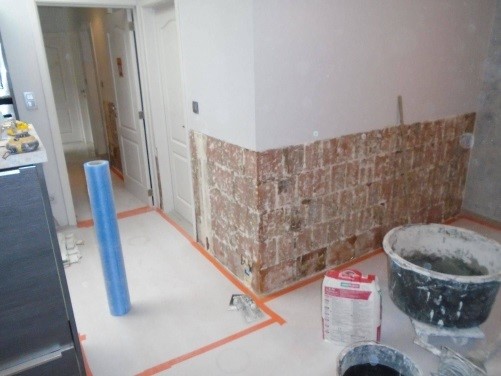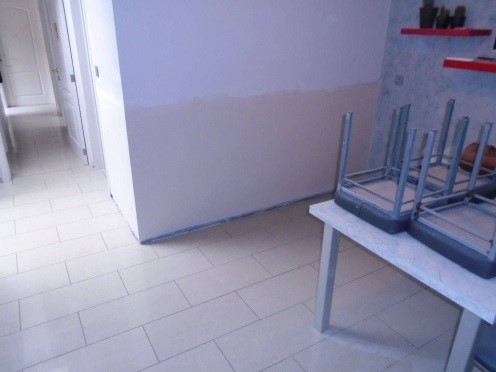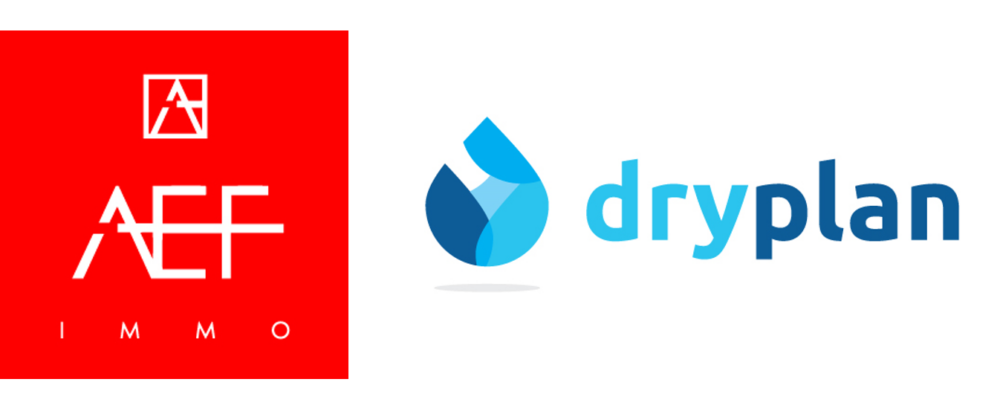The solution to moisture problems.

AEF immo meets Dryplan
Autumn is coming. The beginning of a season with lots of rain and more sitting inside. Suddenly, you notice moisture in your home. How does that moisture get there and what can you do about it? AEF immo spoke with Tim from Dryplan to learn all about moisture and how Dryplan handles it themselves.

What types of moisture are there?
Moisture can be divided into several categories. You have rising damp, condensation damp, basement damp and penetrating damp.
The most common problem is rising damp. When the moisture is visible on the wall up to 1 meter high, we speak of rising damp. It is most common in older houses or apartments built before 1975. The moisture then enters your walls through the foundation.
Condensation often occurs in poorly ventilated rooms or in homes without a ventilation system. It forms when you take a shower, cook, dry your laundry inside or even breathe. When that formed moisture can't get out, it stays in your home and becomes condensation moisture.
Basement moisture can be either as a cause of moisture coming through the floor or through the wall.
Last, we have seepage moisture. This type of moisture comes in through e.g. driving rain against your home and leaks in your walls or roofs that allow moisture to come in.

That's how you track moisture yourself.
There are several indications that allow yourself to notice that you may have moisture in your home. A musty smell is the first indication that there is moisture. Drops on the inside of your windows and moisture drops on the mirror can also indicate moisture. Then there are the more obvious indications such as wallpaper coming loose, salt deposits on your painted walls, a white line on the wall or mold spots. The most obvious are large puddles in, say, the basement.
Consequences for your health.
When you don't address moisture in time, it can also affect your health. There is a relationship between allergy symptoms and having moisture in your home. Moisture is bad for the airways. Especially people with respiratory diseases can have more symptoms from too much moisture. Mold and pests caused by moisture are also bad for your health.
5 tips to prevent moisture in your home.
1 Properly ventilate all areas of your home;
- You can properly ventilate your home by opening the windows once a day for an extended period of time.
2 Have a good ventilation system;
- Venting and ventilating are not the same thing. Venting can be done by regularly opening the windows of your home for an extended period of time so that air can get in and out. Venting is the constant changing of air in your home. There are different ventilation systems such as system B, C and D that allow a house to be properly ventilated. Dryplan can also provide this.
3 During the sale of your house or apartment, turn off the heating;
- Because it gets too cold in your home for too long, condensation forms on the thermal bridges.
4 Use the cooker hood while cooking;
- When you use the cooker hood every time you cook, created moisture can go directly outside and does not linger in your home.
5 Dry your laundry outside or in a ventilated room whenever possible;
- When you often dry your laundry indoors, too often too much condensation forms in the same room. This, in turn, can lead to moisture.
How does Dryplan proceed?
If you think or notice moisture in your home, you can call Dryplan. A Dryplan moisture expert will always visit you on site to perform a professional moisture measurement and make a correct diagnosis. The moisture expert can provide you with an estimate on site so that you know immediately what the cost of the treatment will be. Dryplan then gets to work quickly to solve the moisture problem.


Dryplan also works with floor and wall drainages. With these drainages, even the dankest basement can be made dry with a finish of your choice. The added value in a home sale is very great.
Did you also know that you can apply for a premium to have moisture treated in your house or apartment?
Moisture treatment at Dryplan is eligible for the Flemish renovation premium. This premium amounts to 20% or 30% of the invoice amount (depending on your income). This is possible with a minimum invoice amount of €2500.
Be sure to check out Dryplan's website https://www.dry-plan.be/nl and contact them to receive proper moisture diagnosis.
